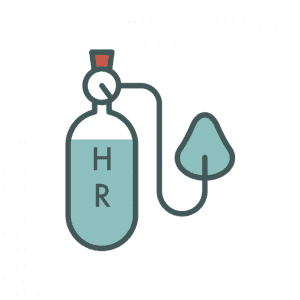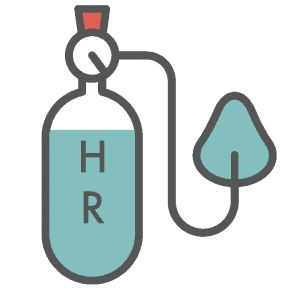Last year will go down as one of the most infamous years of our lifetime. But we know that when there are tremendous challenges, there is tremendous learning to take from these challenges. In Meraki HR fashion, we set out to understand the biggest learnings from 2020 that will impact HR and Business owners or leaders in 2021 and help them prepare for what’s next.
- Maintain flexible work
Before, offices played a crucial role in company culture, and for many, productivity was partly measured by how often you were seated at your desk. Now, leaders have learned that employees can be productive even when they aren’t in the same room. And many prefer it that way.
When remote working is no longer something we’re forced to deal with, don’t expect people to flock back to the office all at once! Offering fully flexible working or a hybrid of flexible working environments to your employees will give them the freedom to choose a working style that works best for them. Granting much-deserved autonomy and trusting teams to work where they want and when they want will make way for added ways to attract the right employees to work for you, and help improve employee engagement and commitment to the company.
- Enhance diversity, equity, and inclusion
In 2020, we witnessed a number of inequalities as far as race, religion and beliefs as well as the more traditional, male and female inequalities, and there was a real outcry for change.
In 2021, creating a diverse workforce, where each person can bring the best of themselves to work regardless of their age, gender, race, background, ability, or religion, isn’t just a nice-to-have – employees are demanding it. IN fact, 74% of employees expect their employer to be more actively involved in current cultural debates, and when a lack of diversity becomes apparent among leadership, distrust among employees often follows.
- Revamp your performance management strategy
In today’s workforce, there is little room for inefficiencies. One of the quickest ways you’ll be able to increase innovative thinking this year across your business is to throw out archaic performance practices, like the annual review! Those of you that know me, know what a big fan I am of reviews, but these shouldn’t just be once a year, and should be much more about having a good conversation.
Rather than spending your time figuring out what your teams did well before the pandemic and the switch to remote work, weed out the processes that aren’t working and introduce new ways of working – that work! If that means creating a brand new performance review or introducing new HR tech that helps you to manage the process, then so be it.
- Help connect your employees’ work to the company’s Mission, Purpose or your Values
Employees are gravitating towards purpose driven companies rather than chasing a higher salary. People are more intrinsically motivated to go above and beyond for companies that align deeply with their personal values and put their people first.
This year, HR will play an instrumental role in helping employees connect their values to the company’s ultimate purpose or mission. This includes helping the business to create its mission or purpose if it doesn’t have one, as well as training managers to have more meaningful conversations with their employees and coordinating ways to give back to the local community and certain causes.
- Build out an HR crisis plan
If an unprecedented pandemic has taught us something, it’s that your HR team or your HR support, needed to be responsive and resilient, and help you to wade through the reams of new rules and legislation, all whilst remaining calm, empathetic and using their common sense. Although it may seem next to impossible to predict what awful thing could happen next, consider devising an HR crisis plan for your business in collaboration with all other teams/departments, so that whatever happens in the future, you are prepared for it.
- Protect your people from burnout
Separating work and life is hard when they both happen in the same place – e.g your home! And when work hours start to bleed into evenings and weekends to manage home schooling or just your home life, employees could find themselves on a fast track to burnout. And burnout can be detrimental to a business. I think we all feel that in some way or another, the pandemic has been a cause of stress. Not only is an overworked employee likely to make more mistakes, but when they’re also more stressed, or worse still clinically depressed, this can account for a large portion of employee turnover.
This year, HR and Business leaders must take a proactive approach to decrease burnout by training managers to identify the signs of stress and also give employees the autonomy to manage their stress levels, but the tools and confidence to know how and when to ask for help without being fearful.
- Lean on the data to make decisions
Because most employee work is now done virtually instead of in person, it’s easier than ever to gather meaningful and accurate people data. By understanding more about your people, the way they work, and how they feel about their work, HR and Business leaders can better identify the needs of their people and uncover the reason behind high attrition rates, sickness absence or working time.
People analytics can also help to reduce unconscious bias, identifying any concerning patterns, and make sure you are discussing and addressing these concerns.
- Prioritise developing your talent
While the skills-gap crisis isn’t new, it has intensified with the progression of COVID-19. And reskilling a workforce in a virtual space adds an additional layer of complexity. Learning and development programs aren’t just a valuable “perk” to offer employees for their personal growth, but an effective strategy for scaling your business in an ever-changing market and retaining key employees.
Plus, companies that prioritise growing and developing the people within their business will also find that this help them to attract and retain top talent when the time comes to hire again.
- Create a seamless virtual onboarding experience
As recruitment freezes are lifted and businesses begin growing their teams again, it’s time to focus on effective ways to integrate new employees into the company culture. But this time, welcoming them to the team won’t be as easy as gathering for lunch in the kitchen or breakout area. Creating a seamless, virtual onboarding experience is paramount to every employee’s short- and long-term success with your company.
HR and business leaders need to be aware of the tech that is out there to help with this, and consider reviewing their induction and onboarding plans to include successfully onboarding people virtually.
- Focus on total rewards
In 2020, many people felt lucky just to hold onto their jobs, and 2021 could still feel the same for many people as businesses hopefully return to work after long periods of shutdown, furlough, redundancies and restructuring, all necessary activities to ensure they had a sustainable and viable business after Covid.
Now, as we have seen in the news recently, many roles are beginning to open up and the economy continues to heal from the traumas of last year, job hunters are searching for their next role and looking to find a company that supports their lifestyle. But not necessarily in the form of just their salary at the end of the month.
HR leaders will find that more people are interested in the total rewards package, including learning and development opportunities, health benefits, wellness programs, work flexibility, and feeling that they are doing a worthwhile job and that their contribution is valued and recognised.
Although 2020 brought with it many challenges, it also created space for a new and improved way of work. If you need help with any of these HR Priorities to ensure you have a HIGH PERFORMING BUSINESS, then why not Book a call with us to talk about how we can work with you?





















